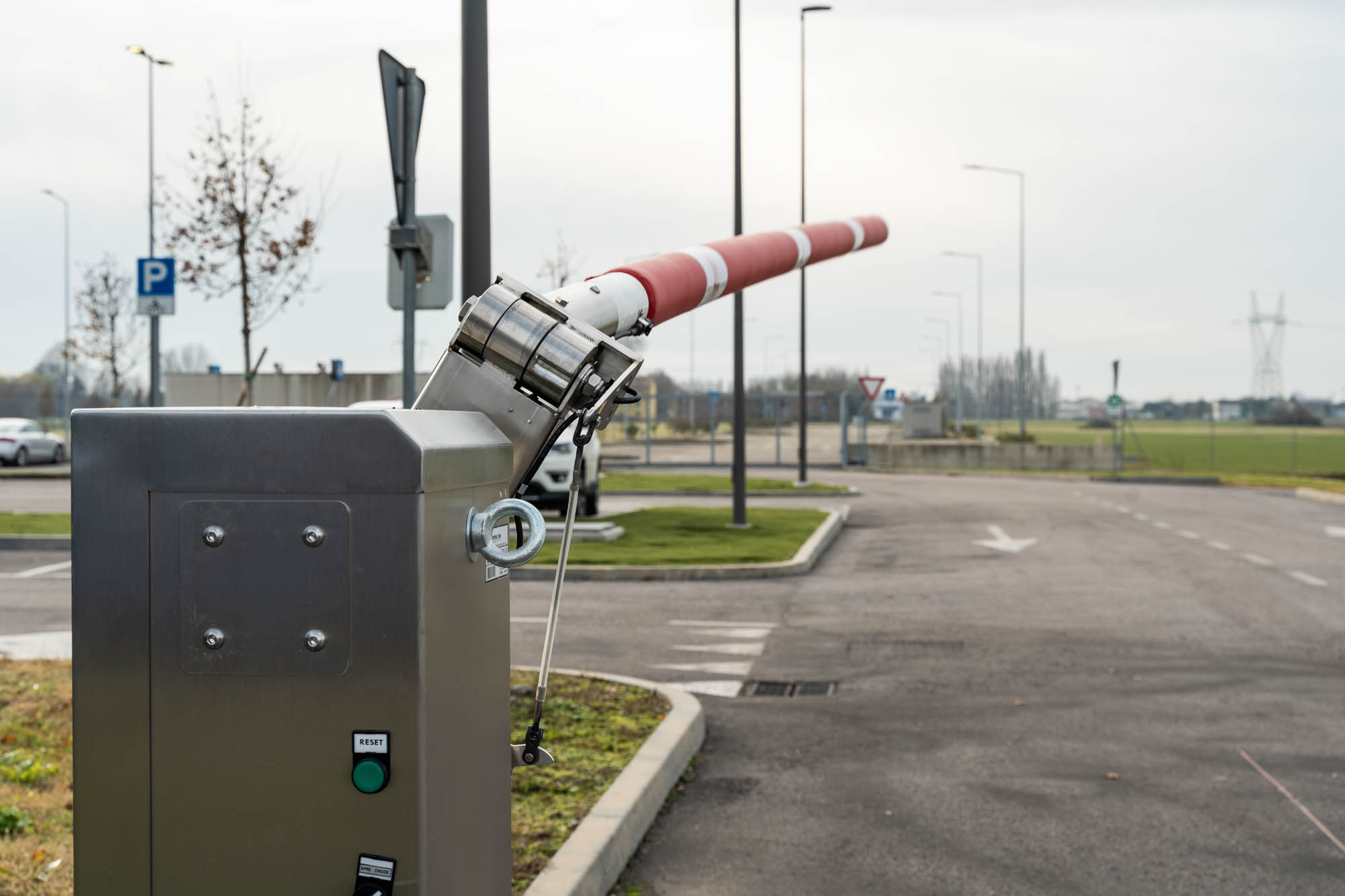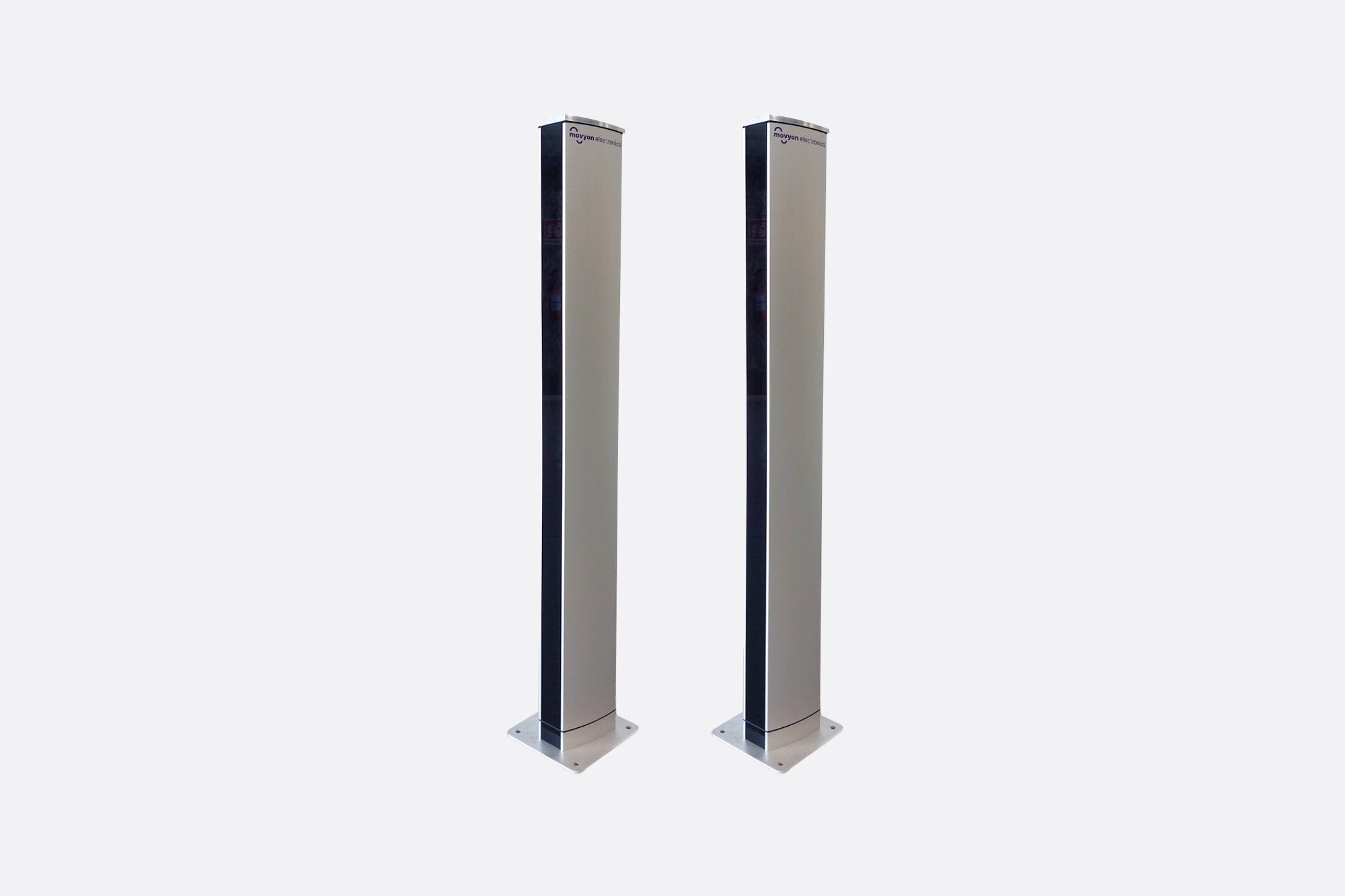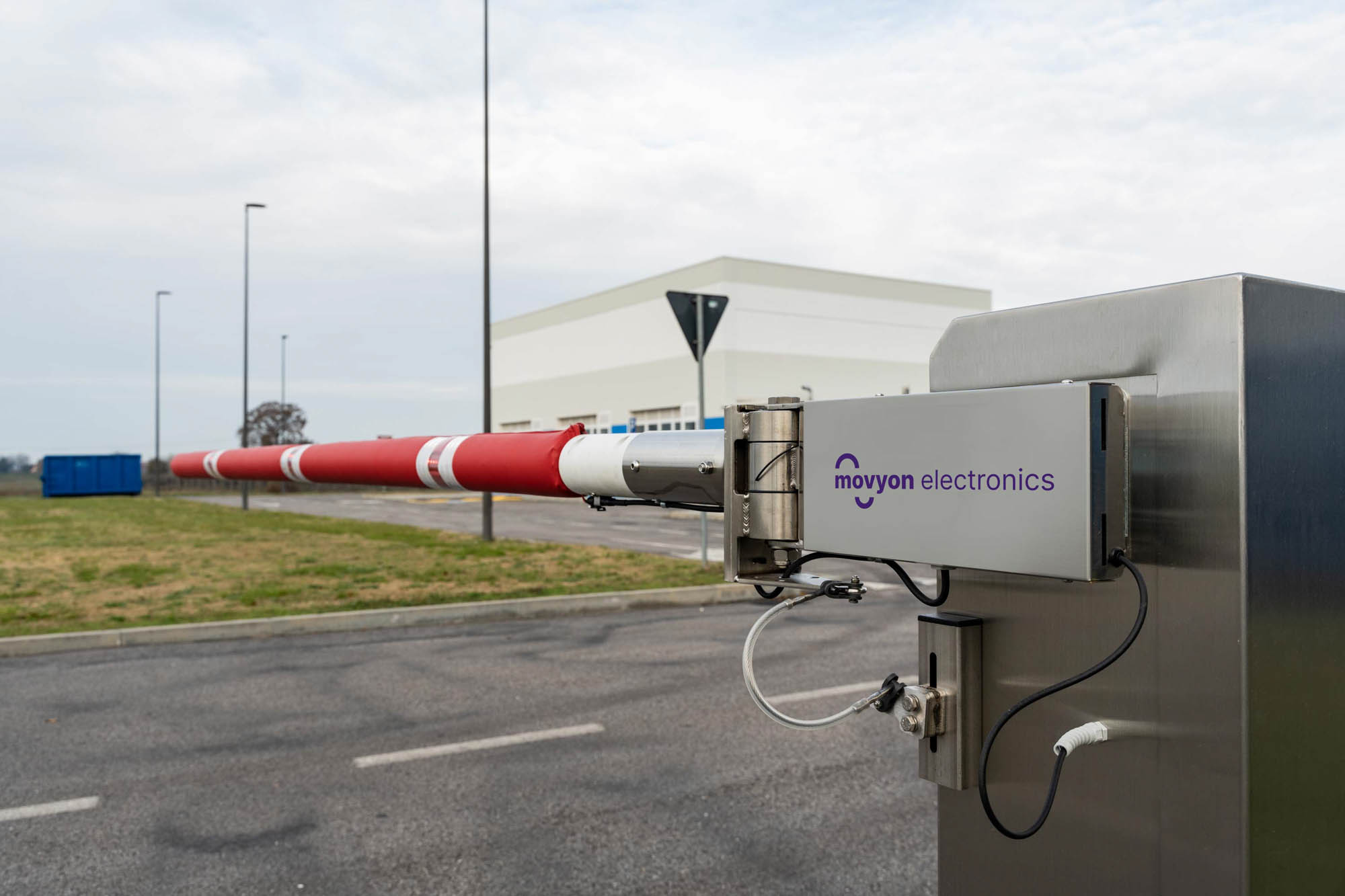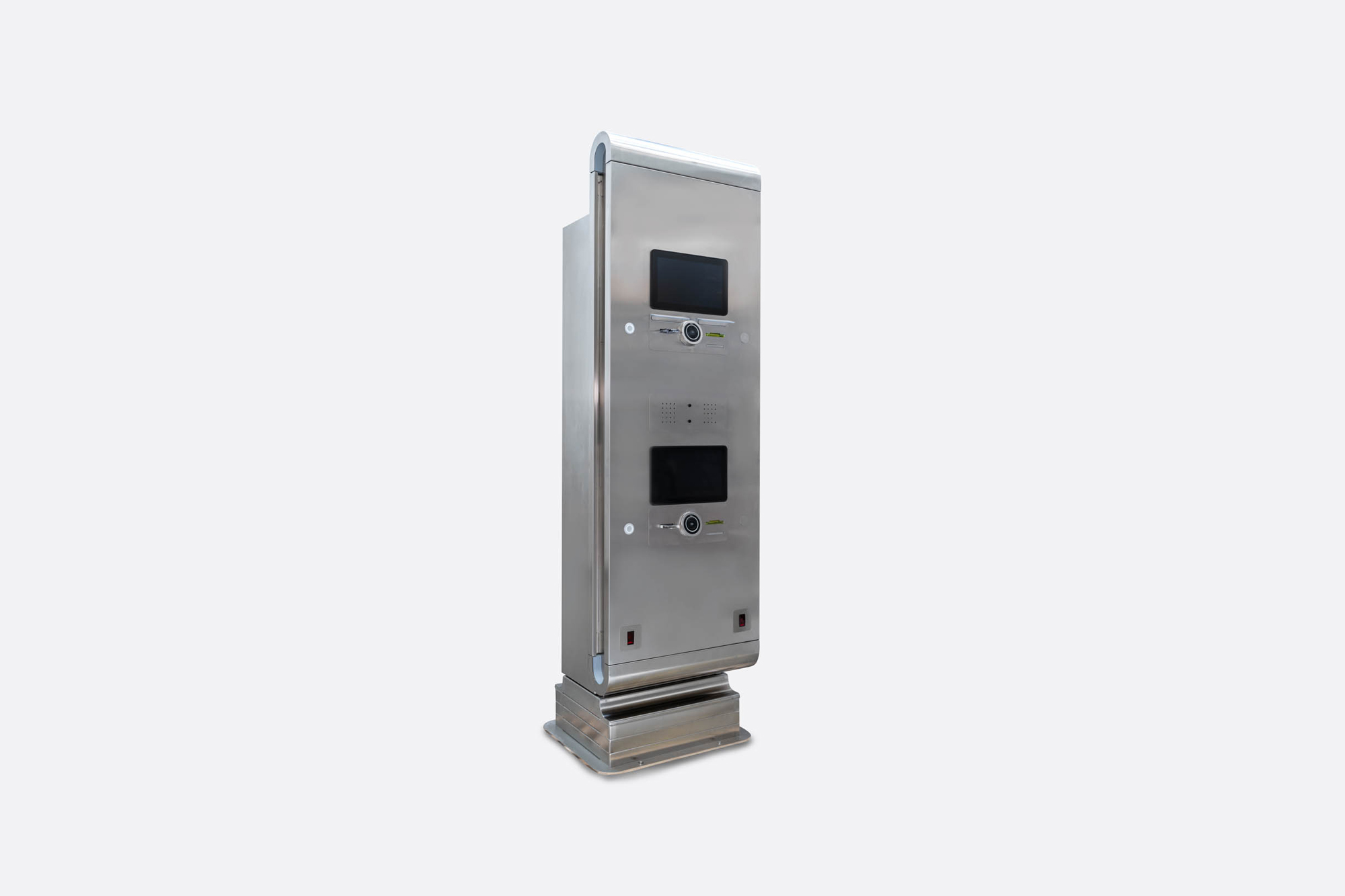To ensure safety, efficiency and durability.
SRB and BLV-SP electromechanical barriers are highly automated devices designed for channelized traffic flow management applications, such as freeway toll booths, access control, parking lots etc. These products ensure safety, efficiency and durability, adapting to the need for tolling and access control on modern infrastructure.
TECHNICAL SPECIFICATIONS
Electromechanical barrier with automatic bidirectional rearming:
- Opening: rises in less than 1.5 seconds making it ideal for electronic toll lanes.
- MCBF (Mean Cycles Between Failures): Greater than 4 million cycles.
- Arms fitted: carbon fiber.
- Installation: can be installed either on the right or left side of the lane without any special adaptation.
- Rearming: is automatic and bidirectional, as the arms returns to its balanced position (after impact with a passing vehicle) in both directions. It is proprietary technology that is patented internationally.
- Electronics: incorporates state-of-the-art microprocessors for optimized power electronics management.
- Gear motor unit: bevel gear pair.
- Power supply: 230 VAC ± 10% – 50/60 Hz single phase.
- Control system connections: can be controlled via Ethernet or input/output signals.
- Optional: integration with inductive board for vehicle detection; integration with photocell for vehicle detection.
BLV-SP pivoting electromechanical barrier:
- Opening: fast-acting (in less than 2 seconds) or slow-acting (about 5 seconds, for “lane closing” applications).
- MCBF (Mean Cycles Between Failures): Greater than 4 million cycles in fast-acting mode.
- Arms fitted: aluminum.
- Installation: can be installed either on the right or left side of the lane without any special adaptation.
- Rearming: manual by operator.
- Electronics: incorporates state-of-the-art microprocessors for optimized power electronics management.
- Gear motor unit: bevel-gear (for fast-acting applications); cascade gears (for “lane closing” applications).
- Power supply: 230 VAC ± 10% – 50/60 Hz single phase.
- Control system connections: can be controlled via Ethernet or input/output signals.
- Optional: integration with inductive board for vehicle detection; integration with photocell for vehicle detection.
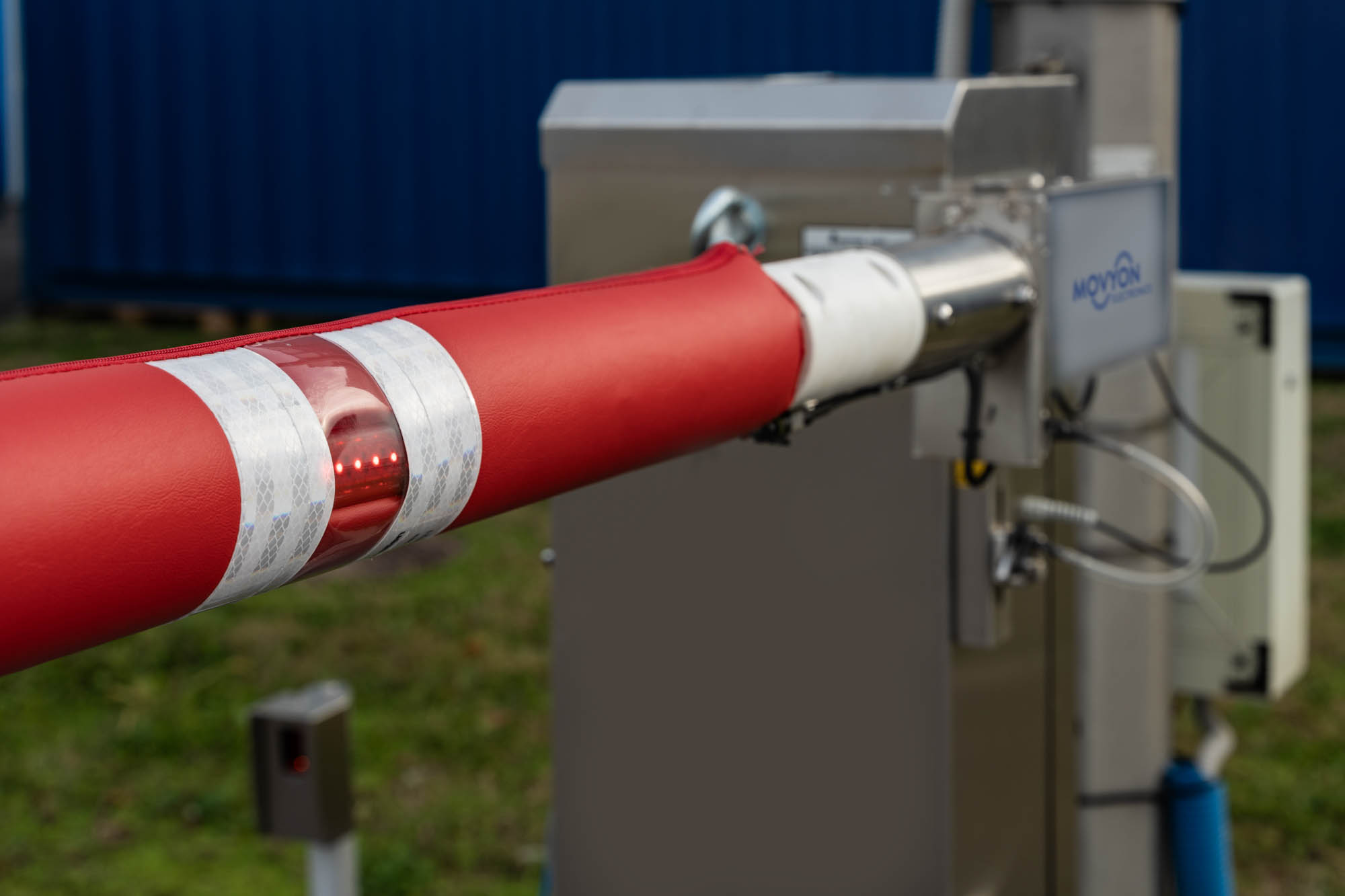
Benefits
Speed and efficiency
Up cycle less than 1.5 seconds, adapts to different applications.
Strength
Both strong and durable; the SRB electromechanical barrier with automatic rearming returns to position without damaging the vehicle or barrier.
Versatility
Can be installed on either side of the lane to suit customer needs without any specific set-up.
Safety
Optional extras such as inductive detectors and photocells offer increased safety levels.
Predictive maintenance
Both barriers have a non-resettable progressive cycle counter, which facilitates maintenance planning.
Applications
Both barriers have a range of application fields, especially on freeways:
- Electromechanical barrier with automatic bidirectional rearming: typically placed as a synchronization barrier on lanes, it raises and closes as each vehicle passes.
- BLV-SP pivoting electromechanical barrier: the fast barrier can be used for synchronization (e.g. in automatic or manual toll lanes), while the slow barrier is typically
